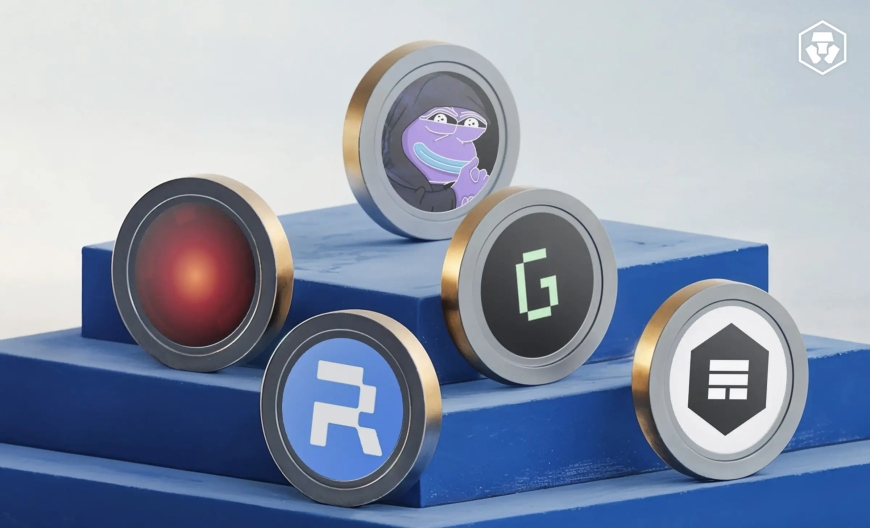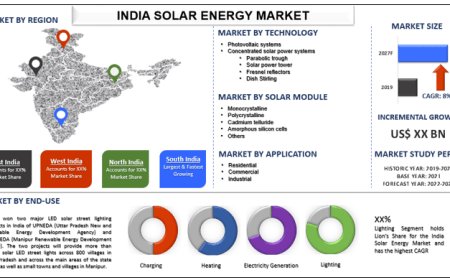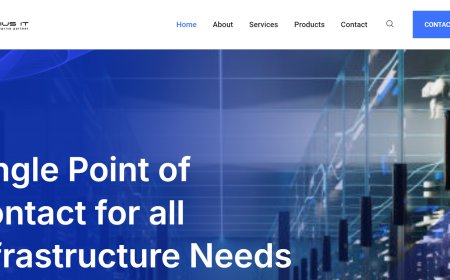How DeFAI Token Development Is Redefining Liquidity, Yield, and Risk Management

The rise of Decentralized Finance (DeFi) has triggered a revolution in how users interact with money, assets, and financial instruments. From lending and borrowing to trading and yield farming, DeFi protocols have replaced traditional intermediaries with transparent smart contracts. But as the sector matures, inefficiencies in liquidity allocation, unsustainable yield strategies, and unmanaged risks have come to light. These challenges threaten the long-term sustainability of the DeFi ecosystem.
This is whereDeFAIthe integration ofDecentralized Finance and Artificial Intelligencecomes into play. Specifically,DeFAI token developmentis changing the game by embedding intelligence into the very architecture of decentralized finance. These next-gen tokens are equipped with AI agents capable of autonomous learning, prediction, and decision-making, enabling more efficient, dynamic, and secure financial operations. Through intelligent token design, DeFAI token is redefining how liquidity is distributed, how yield is generated, and how risks are managed in the digital asset economy.
Understanding DeFAI Token Development
DeFAI tokens are not just units of value or governance; they are AI-enabled programmable assets that can adapt to market conditions, analyze data, and execute financial logic in real time. By integrating machine learning, predictive modeling, and intelligent automation into token smart contracts or their supporting systems, developers can create assets that behave autonomously and rationally in rapidly changing markets.
The development of DeFAI tokens typically involves a hybrid architecture. The on-chain layer governs the logic and interaction rules through smart contracts, while the AI componenteither off-chain or via decentralized AI networksprocesses complex data sets and returns decisions to the blockchain. Together, this architecture allows tokens to make intelligent decisions about liquidity provisioning, yield allocation, and risk exposure, often without human intervention.
Liquidity: From Static Pools to Adaptive Flow
Liquidity is the backbone of DeFi. Without it, decentralized exchanges cannot execute trades efficiently, lending platforms face high slippage, and users suffer from capital inefficiency. Traditional DeFi liquidity pools operate on predefined rules and require manual adjustment or incentives like yield farming to attract liquidity. This approach is limited in its responsiveness to market changes.
DeFAI tokens change this by making liquidity managementintelligent and adaptive. Through the use of AI, these tokens can monitor liquidity flow in real time, detect inefficiencies, and shift resources dynamically to where they are needed most. For instance, if a token senses a drop in pool depth on a decentralized exchange during a period of high trading volume, it can autonomously incentivize liquidity providers by increasing yield temporarily or move liquidity from less active pools.
Furthermore, AI-driven DeFAI tokens can forecast liquidity needs based on historical trading behavior, seasonal patterns, or even external data such as news sentiment. This predictive capability prevents crises like sudden liquidity shortages or panic-induced bank runs on DeFi protocols. Ultimately, this leads to more resilient and responsive financial ecosystems where capital is efficiently allocated and liquidity remains consistently healthy.
Yield: From Fixed APYs to Intelligent Earnings Optimization
Yield generation is a major attraction in DeFi. Protocols offer users the opportunity to earn returns by staking, farming, or lending their assets. However, many of these strategies are static, temporary, or unsustainable. Users often chase high APYs without understanding the risks involved or the mechanics behind the reward models.
DeFAI tokens introduce a transformative layer ofyield intelligence. Instead of relying on fixed or gamified rewards, these tokens use AI agents to analyze yield opportunities across multiple protocols, blockchains, and liquidity pools. They continuously evaluate factors such as volatility, gas fees, historical returns, and smart contract risks to determine the most optimal strategy for a specific user profile.
For example, a DeFAI token may autonomously allocate a user's assets to a lending protocol when interest rates are favorable and then move those funds to a liquidity pool if APY drops. This behavior mimics what a human portfolio manager might dobut faster, cheaper, and without emotional bias. Moreover, DeFAI tokens can personalize yield strategies based on user risk tolerance, timeframe, and asset preferences, making yield farming safer and more sustainable.
In the long term, this intelligent yield approach reduces inefficiencies like yield fragmentation, capital lock-in, and user churn. Users no longer need to manually manage their positions or jump from one farm to another chasing rewards; the token does it for them, intelligently and autonomously.
Risk Management: From Reactive Defense to Predictive Protection
One of the most pressing issues in DeFi is thelack of effective risk management. Protocols are frequently exploited due to smart contract vulnerabilities, price manipulation, or economic attacks like flash loans. Users are left exposed, and when risks manifest, the damage is often severe and irreversible.
DeFAI token development brings a paradigm shift by makingrisk management proactive and predictive. AI agents embedded within or connected to these tokens can detect anomalies, flag suspicious transactions, and anticipate systemic vulnerabilities. These tokens can simulate stress scenarios based on current market conditions and adjust their behavior accordingly.
For example, if a DeFAI token notices an unusual spike in borrowing activity on a lending platform, it might restrict further exposure, raise interest rates, or move funds to a safer pool. In trading environments, AI agents can prevent slippage or protect against front-running by dynamically adjusting trade parameters based on detected patterns. Additionally, DeFAI tokens can work in tandem with decentralized insurance protocols, automating premium pricing and claims processing based on real-time risk models.
Perhaps most importantly, these tokens foster trust. By demonstrating active self-protection mechanisms and clear responses to threats, DeFAI tokens make users feel more secure, encouraging broader adoption of intelligent DeFi systems.
Designing Secure DeFAI Token Architectures
Building DeFAI tokens capable of handling liquidity, yield, and risk requires an advanced architecture that combines the robustness of blockchain with the flexibility of AI. Developers must ensure that smart contracts are modular and upgradeable, allowing for the integration of new AI strategies as the market evolves.
Security is paramount. The smart contracts must be formally verified and audited to prevent exploitation. On the AI side, the models must be trained with clean, unbiased data to avoid erroneous behavior. More importantly, the interaction between the AI engine and the smart contract must be governed by clear rules and fallback mechanisms to prevent cascading failures.
Decentralized oracles serve a critical function in this architecture. They bridge the gap between blockchain and external data, allowing the AI to receive inputs such as market prices, trading volumes, and even social sentiment. The quality, speed, and reliability of these oracles determine the overall responsiveness and accuracy of the tokens decisions.
As the space matures, many projects are adopting decentralized AI compute networks that allow models to be trained, verified, and run in a distributed manner. This adds a layer of trust and scalability, ensuring that no single point of failure compromises the intelligence driving the DeFAI tokens.
Tokenomics That Aligns AI Incentives and Market Dynamics
In DeFAI ecosystems, tokenomics is not just about scarcity and speculationits aboutaligning intelligent behavior with market incentives. A well-designed token economy ensures that AI agents act in ways that benefit users, maintain system stability, and reward good performance.
This includes staking mechanisms where users delegate funds to AI agents in return for a share of the yield, as well as penalty systems for underperformance or risky behavior. Reward models should be dynamic and reflect the success of AI decisions. For instance, if an agent effectively mitigates a loss or maximizes yield, it may trigger higher reward distributions.
Governance is another crucial element. DeFAI tokens often function as governance tools that allow users to vote on changes to AI models, protocol rules, and economic parameters. This democratic layer keeps AI accountable while enabling constant evolution in strategy and performance.
By integrating intelligent tokenomics, DeFAI projects ensure that all stakeholdersusers, developers, and AI agentsare working toward shared success, making the ecosystem more sustainable and fair.
Real-World Applications and Projects Leading the Way
Several projects are already embracing the DeFAI vision, using intelligent token design to manage liquidity, generate yields, and control risk. Autonomous trading protocols are developing self-learning bots that make trades based on multi-chain data analysis. AI-driven lending platforms are offering credit scoring models that assess borrower trustworthiness without centralized oversight.
Insurance dApps are using DeFAI tokens to automatically process claims and price coverage based on risk analytics. Meanwhile, cross-chain yield optimizers are employing DeFAI logic to move capital fluidly across Layer 1s and Layer 2s, always chasing the highest and safest returns.
As more projects integrate these technologies, the DeFi landscape will see an evolution from static code and passive value to intelligent, autonomous financial agents running on-chain.
The Road Ahead: Challenges and the Future of DeFAI
While the promise of DeFAI token development is immense, there are real challenges that must be addressed. Data availability, model transparency, AI safety, and on-chain compute limitations remain key technical hurdles. Regulatory uncertainty around automated financial decision-making also looms large.
Despite this, the long-term outlook is optimistic. With advancements in zkML (zero-knowledge machine learning), federated learning, and decentralized compute infrastructure, we are approaching a future where AI can operate natively on-chain with transparency and security.
DeFAI tokens will not just participate in the financial system; they willrun it, optimize it, and evolve it. As these tokens become smarter, more ethical, and more secure, they will lay the foundation for a new era in financial coordinationone that is data-driven, decentralized, and deeply intelligent.
Conclusion
The development of DeFAI tokens marks a significant leap forward in the evolution of decentralized finance. By embedding AI intelligence directly into the token architecture, developers can create assets that adapt to market dynamics, optimize yield strategies, and proactively manage risk. This transforms static DeFi into a responsive, predictive, and self-regulating financial system.
As DeFi users demand more sophistication and security, DeFAI tokens offer a path forward. They bring together the best of both worldsAIs analytical power and blockchains trustless infrastructureto redefine how liquidity flows, how yield is earned, and how risk is neutralized.
In this new frontier of intelligent finance, DeFAI tokens are not merely tools; they are agents of change. Their development will shape the future of financial autonomy, bringing us closer to a decentralized economy that is not just efficient, but truly intelligent.






































